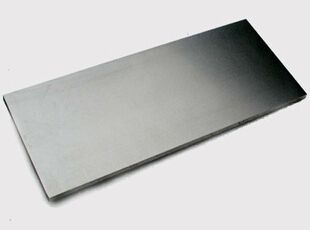What Hafnium Is Used For?

What Hafnium Is Used For?
Hafnium occurs in zirconium ores. Because this metal must be removed from "reactor-grade" zirconium, the production of hafnium is largely dependent on zirconium production, as discussed later. Its melting point is 4032℉. However, it has not been available in sufficiently large quantities to have any extensive elevated-temperature applications other than in control rods for water-cooled nuclear reactors.

What Hafnium Is Used For?
The hafnium product from the solvent-extraction step of the zirconium-hafnium separation is treated by the Kroll process to produce a sponge. To obtain the purity needed to make hafnium ductile, the sponge is further refined by the "iodide process" before arc melting in a consumable-electrode furnace. The material is usually processed twice by consumable-electrode arc melting, first with a protective atmosphere and second in a vacuum.

Hafnium plate
Fabrication techniques for hafnium are much the same as for zirconium and titanium. It can be hot forged and rolled readily at about 1700℉. Intermediate annealing at about 1475℉ is required during cold rolling. Hafnium must be welded in a protective atmosphere.
Hafnium is well suited for reactor control rods because of its capability to absorb thermal neutrons, its good corrosion resistance in the water, and its good mechanical properties. Hafnium oxide has also been used in various components of X-ray tubes, discharge tubes, radio tubes, television tubes, and rectifiers. In addition, it has been used as an alloying element in special alloys.
Conclusion
Thank you for reading our article and we hope it can be helpful to you. If you want to know more about Hafnium and other refractory metals, you can visit Advanced Refractory Metals for more information. We provide our customers with high-quality Hafnium products and other refractory metals at a very competitive price.
{{item.content}}
LEVE A REPLY
{{item.children[0].content}}
{{item.content}}






